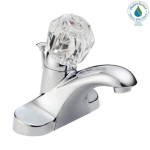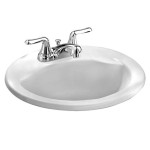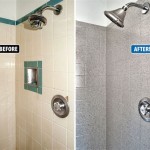What Paint Should You Use On Bathroom Walls?
Selecting the appropriate paint for bathroom walls is a crucial decision that impacts both the aesthetic appeal and the longevity of the finish. Bathrooms present a unique environment characterized by high humidity, fluctuating temperatures, and potential for water exposure. Therefore, regular interior paint is often insufficient to withstand these conditions. This article will delve into the key factors to consider when choosing bathroom paint, explore different paint types, and provide guidance on preparation and application techniques to ensure a durable and attractive result.
The primary concern in a bathroom is moisture. Persistent humidity can lead to the growth of mold and mildew, which can not only damage the paint but also pose health risks. Furthermore, moisture can cause paint to peel, blister, or crack, leading to premature deterioration of the finish. Therefore, it is essential to select a paint formulated to resist moisture penetration and inhibit the growth of microorganisms.
Understanding Paint Finishes
Paint finishes refer to the level of sheen or glossiness of the paint. Different finishes offer varying degrees of durability, moisture resistance, and ease of cleaning, making some more suitable for bathrooms than others. The most common paint finishes include flat/matte, eggshell, satin, semi-gloss, and gloss. Each finish offers different benefits for a bathroom environment:
Flat/Matte: Flat or matte finishes have the least amount of sheen and provide a non-reflective surface. While they are excellent at concealing imperfections in the wall surface, they are not ideal for bathrooms due to their porous nature. Flat paint tends to absorb moisture and is difficult to clean, making it susceptible to mold and mildew growth.
Eggshell: Eggshell finishes have a slight sheen, offering a compromise between matte and satin. They are more durable and easier to clean than flat finishes, making them a reasonable option for bathrooms with good ventilation. However, they are still not as moisture-resistant as higher-sheen options.
Satin: Satin finishes have a smooth, velvety appearance and offer good durability and moisture resistance. They are easier to clean than eggshell finishes and are a popular choice for bathrooms due to their balance of aesthetics and functionality. However, satin finishes may highlight imperfections in the wall surface.
Semi-Gloss: Semi-gloss finishes have a noticeable sheen and are highly durable and moisture-resistant. They are easy to clean and can withstand frequent scrubbing, making them an excellent choice for bathrooms, especially in areas prone to splashing, such as around the shower or sink. Semi-gloss finishes can highlight imperfections more than lower-sheen options.
Gloss: Gloss finishes have the highest sheen and offer the best durability and moisture resistance. They are extremely easy to clean and are ideal for areas exposed to frequent water contact. However, gloss finishes can be overly reflective and may highlight imperfections in the wall surface significantly. While durable, they are often deemed too shiny for entire walls and are typically reserved for trim and cabinetry.
For most bathrooms, a satin or semi-gloss finish is recommended. These finishes provide a good balance of durability, moisture resistance, and aesthetics. However, the specific choice will depend on individual preferences and the characteristics of the bathroom. A bathroom with poor ventilation may benefit from a semi-gloss finish, while a well-ventilated bathroom may be suitable for a satin finish. Consideration of the existing wall surface and the desired aesthetic is crucial in making the optimal selection.
Types of Paint Formulations
In addition to the finish, the type of paint formulation is also a critical factor to consider. Different paint formulations offer varying levels of moisture resistance, mildew resistance, and durability. The most common paint formulations include latex, oil-based, and specialty bathroom paints:
Latex Paint: Latex paint, also known as water-based paint, is the most commonly used type of paint for interior walls. It is relatively easy to apply, dries quickly, and cleans up easily with soap and water. While standard latex paint may not be suitable for bathrooms, there are specially formulated latex paints designed for high-humidity environments. These paints typically contain mildewcides and offer improved moisture resistance. Acrylic latex paints are generally preferred over vinyl latex paints due to their superior durability and adhesion.
Oil-Based Paint: Oil-based paint offers excellent durability and moisture resistance. It forms a hard, durable finish that is resistant to scrubbing and water penetration. However, oil-based paint has several drawbacks, including a strong odor, longer drying time, and the need for mineral spirits for cleanup. Furthermore, oil-based paint can be more difficult to apply and may require special primers. Due to these factors, oil-based paint is less commonly used for bathroom walls than latex paint.
Specialty Bathroom Paints: Specialty bathroom paints are specifically formulated to withstand the harsh conditions of a bathroom environment. These paints typically contain a high concentration of mildewcides and offer excellent moisture resistance. They are available in various finishes, including satin and semi-gloss, and are designed to prevent mold and mildew growth. While they may be more expensive than standard latex paints, they offer superior protection and longevity in a bathroom environment. Many of these paints are also formulated with stain-blocking properties, which can be beneficial in bathrooms prone to water stains.
When selecting paint for a bathroom, a high-quality acrylic latex paint specifically formulated for bathrooms or a specialty bathroom paint is generally recommended. These paints provide the best combination of moisture resistance, mildew resistance, and ease of application. Avoid using standard latex paint or oil-based paint unless specifically recommended by a paint professional.
Preparing Bathroom Walls for Painting
Proper preparation is essential for achieving a professional and long-lasting paint job in a bathroom. Thorough preparation ensures that the paint adheres properly to the wall surface and provides optimal protection against moisture. The following steps should be taken to prepare bathroom walls for painting:
Cleaning: The first step is to thoroughly clean the walls to remove any dirt, grease, mildew, or soap scum. Use a mild detergent and warm water to wash the walls, paying particular attention to areas prone to splashing or staining. For stubborn mildew stains, use a solution of bleach and water (following safety precautions) to disinfect the area. Rinse the walls thoroughly with clean water and allow them to dry completely.
Repairing: Inspect the walls for any cracks, holes, or imperfections. Fill any holes or cracks with a spackling compound or joint compound, following the manufacturer's instructions. Allow the compound to dry completely and then sand it smooth with fine-grit sandpaper. Remove any dust or debris from the surface before proceeding.
Priming: Priming is a crucial step that helps to seal the wall surface, improve paint adhesion, and prevent stains from bleeding through. Use a high-quality primer specifically designed for bathrooms or damp environments. Apply the primer evenly to the entire wall surface, following the manufacturer's instructions. Allow the primer to dry completely before applying the paint. Using a primer with mold and mildew resistance will offer extra benefits.
Taping: Use painter's tape to protect trim, ceilings, and other surfaces from paint splatters. Apply the tape carefully and firmly to ensure a clean line. Remove the tape immediately after painting to prevent the paint from peeling.
Ventilation: Ensure adequate ventilation in the bathroom during painting. Open windows and doors or use a fan to circulate air. This will help to speed up the drying process and reduce the risk of fumes building up.
By following these preparation steps, one can create a smooth, clean, and properly sealed surface that is ready for painting. Proper preparation will significantly improve the appearance and longevity of the paint job.
Several additional factors merit consideration. One should research and select paints with low volatile organic compounds (VOCs). VOCs are chemicals released into the air as the paint dries, and high levels can be harmful to health, particularly in poorly ventilated spaces. Low-VOC or zero-VOC paints are readily available and are a more environmentally friendly and health-conscious choice.
When choosing painting tools, it is advisable to invest in high-quality brushes and rollers. Good-quality tools will provide a smoother, more even finish and will last longer. Synthetic brushes are generally recommended for latex paints, while natural-bristle brushes are better suited for oil-based paints. Choose a roller with the appropriate nap length for the wall texture. Shorter nap rollers are suitable for smooth walls, while longer nap rollers are better for textured walls.
Finally, consider the existing color scheme of the bathroom when choosing a paint color. Lighter colors can help to make a small bathroom feel larger and brighter, while darker colors can create a more dramatic and intimate atmosphere. Test paint samples on a small area of the wall before committing to a full paint job. Observe the color under different lighting conditions to ensure that it is the desired shade. By carefully considering these factors, one can select the perfect paint color to enhance the overall aesthetic of the bathroom.

Best Type Of Paint For Bathrooms 2024 Guide Forbes Home

The Best Paint For Bathrooms Solved Bob Vila

How To Paint Bathroom Walls Like A Professional Benjamin Moore

25 Best Bathroom Paint Colors For 2024

Which Paint Should I Use In A Bathroom Victoriaplum Com

Bathroom Paint What To Use In A Ideas

Ideas For Paint Tiles And Wallpaper The Bathroom

25 Best Bathroom Paint Colors For 2024

Which Paint Should I Use In A Bathroom Victoriaplum Com

What Is The Best Paint For Bathroom Walls
Related Posts







